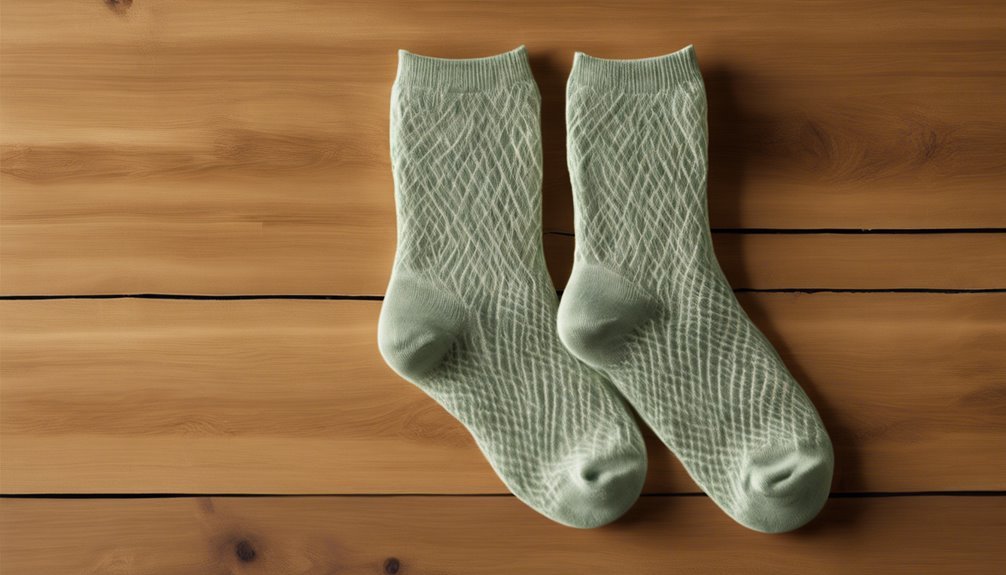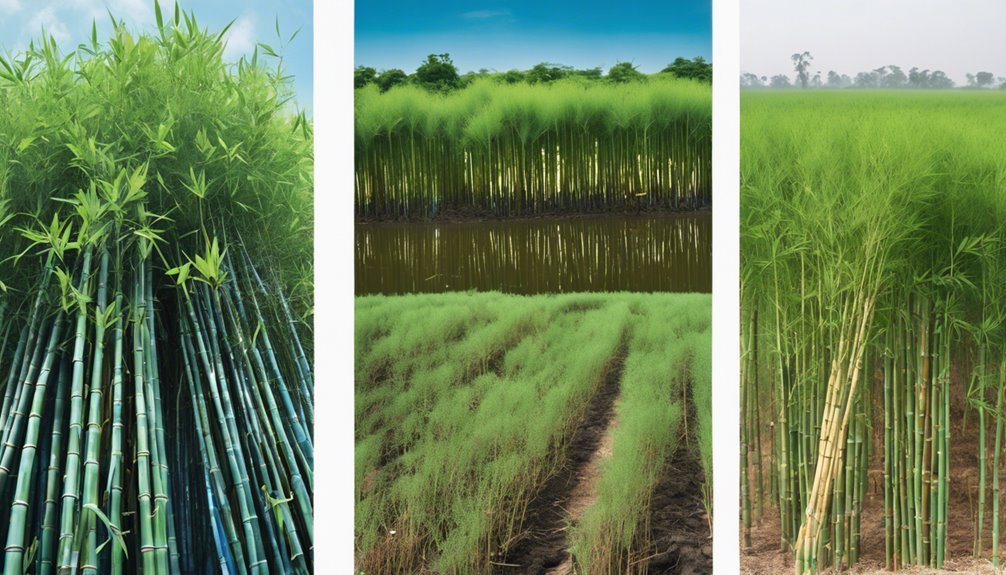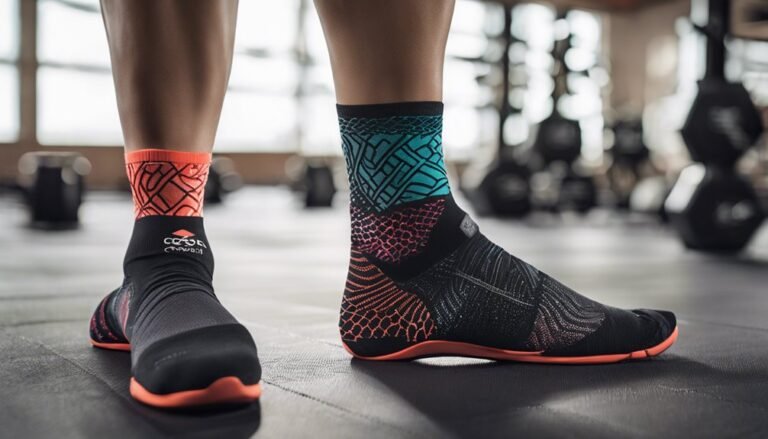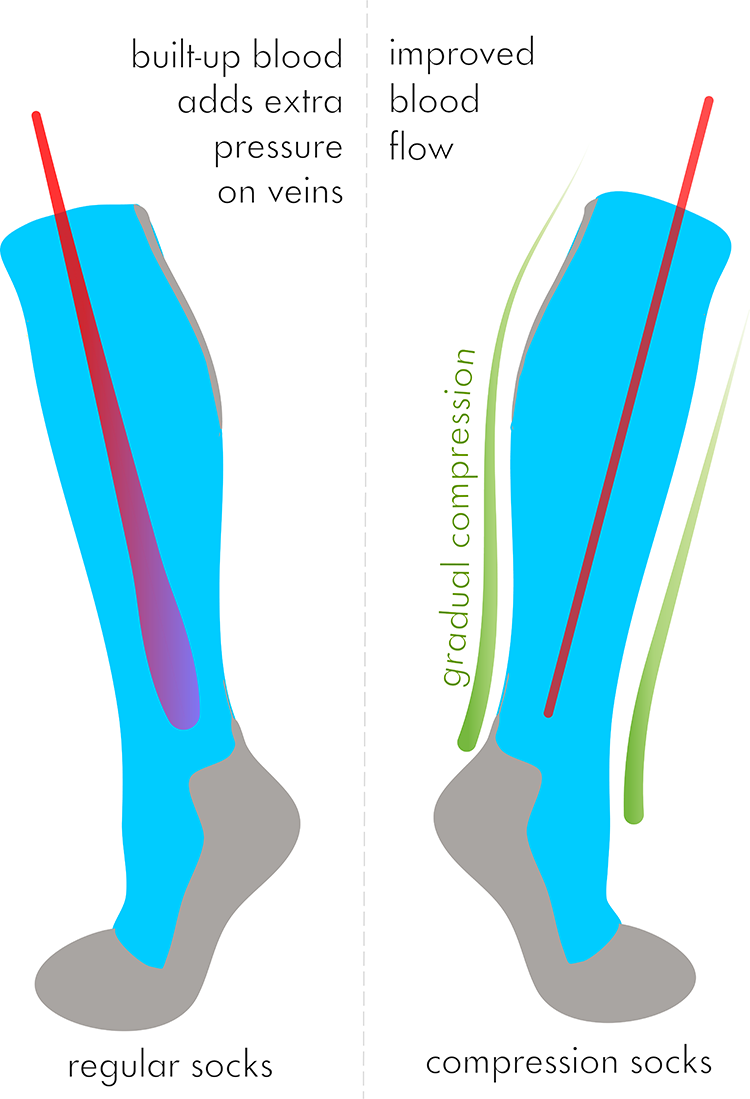Bamboo Socks vs. Cotton Socks: Which One Is More Sustainable?
When comparing bamboo socks to cotton socks, you'll find bamboo is the more sustainable choice. Bamboo grows rapidly, matures in three to five years, and needs less water and land than cotton. It also requires fewer pesticides, making it an eco-friendly option. Plus, bamboo socks are biodegradable and have a lower carbon footprint. If you're interested in the various impacts and benefits of these materials, there's much more to uncover about sustainable textiles.
Understanding Bamboo as a Textile

While many people may not realize it, bamboo is rapidly gaining recognition as a versatile and sustainable textile. Its unique bamboo characteristics make it an excellent alternative to traditional fabrics. For one, bamboo's natural breathability guarantees comfort, allowing your skin to stay cool and dry. Plus, its moisture-wicking and antibacterial properties help prevent odors, making it ideal for active wear like socks. Additionally, bamboo fibers are incredibly soft, providing a luxurious feel without compromising durability. The textile properties of bamboo also include natural UV protection, enhancing your overall comfort and protection. By choosing bamboo textiles, you're not just opting for comfort; you're supporting a sustainable industry that values both environmental freedom and quality. It's a decision that aligns with a more conscious lifestyle.
The Growth Process of Bamboo
When you consider bamboo's growth process, its rapid growth rate is truly impressive, often reaching maturity in just three to five years. This quick turnaround, combined with its low water requirements and natural pest resistance, makes bamboo an incredibly sustainable choice for textiles. Understanding these factors can help you appreciate why bamboo socks might be a smarter option for your wardrobe.
Rapid Growth Rate
Although many plants take years to reach maturity, bamboo is remarkable for its rapid growth rate, often exceeding three feet in just a single day under ideal conditions. This extraordinary speed offers significant bamboo benefits, making it an attractive option for sustainable practices. When you consider the growth advantages of bamboo, you'll realize it can be harvested every three to five years, unlike cotton, which requires decades to fully mature. This rapid renewal means less pressure on land and resources, allowing for a more eco-friendly approach to textile production. Choosing bamboo socks not only supports a faster-growing resource but also promotes a lifestyle that values sustainability and environmental freedom. Embrace bamboo for its remarkable growth and positive impact on our planet.
Low Water Requirements
Bamboo thrives with minimal water, making it an incredibly efficient crop compared to cotton, which demands significant irrigation. This efficiency not only promotes water conservation but also aligns with principles of sustainable agriculture that many people value today. When you choose bamboo socks, you're supporting a cultivation process that requires less water, thereby reducing the strain on our precious water resources. In contrast, the cotton industry is notorious for its heavy water usage, contributing to environmental degradation. By opting for bamboo, you're making a conscious decision that prioritizes ecological balance and freedom from harmful farming practices. Embrace the choice that champions sustainability and helps preserve our planet for future generations. Your decision can lead to meaningful change.
Natural Pest Resistance
Since bamboo naturally develops a resilience to pests, it reduces the need for harmful pesticides commonly used in cotton farming. This inherent pest control capability not only promotes a healthier ecosystem but also aligns with the principles of organic farming. By choosing bamboo, you support a cultivation method that minimizes chemical input, fostering a more sustainable environment. This means less toxic runoff, healthier soil, and a reduction in the chemical burden on our planet. You're not just opting for comfort in your socks; you're making a conscious choice that embraces nature's solutions. In a world where freedom includes the right to choose sustainable options, bamboo stands out as a superior choice for eco-conscious consumers.
Cotton: A Historical Overview
When you look at cotton's history, you see a crop that's been woven into the fabric of human civilization for thousands of years. Its production has shaped economies and cultures, but it hasn't come without significant environmental costs. Understanding these impacts is essential as you weigh your sock options today.
Cotton Production History
Although many people appreciate cotton for its comfort and versatility, few realize the complex history that has shaped its production. Cotton has been cultivated for thousands of years, with ancient civilizations employing innovative cotton cultivation techniques to meet their textile needs. Historical cotton usage spans cultures and continents, from India's intricate weavings to the American South's cotton plantations, highlighting its significance in economies and societies. Yet, this history isn't without its darker chapters, including exploitation and environmental degradation. As you consider your clothing choices, remember that understanding this legacy is essential. Embracing sustainable practices in cotton production could honor its rich history while promoting a future that values both freedom and ethical responsibility. Your awareness can drive change in the textile industry.
Environmental Impact Overview
The history of cotton production reveals not only its cultural significance but also the environmental toll it has taken over the centuries. While cotton has provided economic opportunities and comfort, it's important to recognize the unsustainable practices that have often accompanied its cultivation. From excessive water usage to harmful pesticide applications, conventional cotton farming poses serious environmental challenges. However, there's a growing movement towards sustainable practices that prioritize ecological balance and reduce harm. By choosing organic or sustainably sourced cotton, you can support methods that enhance soil health and conserve water. Ultimately, understanding cotton's impact empowers you to make informed choices that align with your values and promote environmental benefits, fostering a more sustainable future for us all.
The Environmental Impact of Cotton Farming
While many people admire cotton for its softness and breathability, the environmental impact of cotton farming often goes unnoticed. Conventional cotton farming involves high pesticide use, leading to soil degradation and biodiversity loss. Organic cotton presents a more sustainable alternative, employing eco-friendly practices that help preserve ecosystems. Additionally, labor practices in the cotton industry can be exploitative unless fair trade standards are upheld. Here's a breakdown of cotton's environmental concerns:
| Impact | Conventional Cotton | Organic Cotton |
|---|---|---|
| Pesticide Use | High | Low |
| Soil Degradation | Significant | Minimal |
| Biodiversity Loss | Severe | Negligible |
| Labor Practices | Often Exploitative | Fair Trade |
Choosing wisely can make a difference in sustaining our planet.
Resource Consumption: Water and Land Use

When it comes to resource consumption, bamboo socks considerably outperform cotton socks in both water and land use. Cotton farming requires massive amounts of water and extensive land, straining our natural resources. In contrast, bamboo grows quickly and needs far less water, making it a more sustainable option for environmentally-conscious consumers.
Water Usage Comparison
Considering the environmental impact of textile production, it is crucial to examine water usage when comparing bamboo socks and cotton socks. Bamboo cultivation typically requires less water than cotton, making it a more sustainable choice regarding water conservation.
- Bamboo can thrive in diverse climates with minimal irrigation.
- Cotton farming often depends on extensive watering systems, especially in arid regions.
- Opting for bamboo socks supports sustainable practices that reduce overall water consumption.
Land Utilization Differences
As you explore the land utilization differences between bamboo and cotton socks, it becomes clear that bamboo's growth requires considerably less arable land compared to cotton. Bamboo demonstrates exceptional land efficiency; it can thrive in diverse conditions without the intensive agricultural practices cotton demands. This means you can produce more bamboo fabric with less land, allowing for more sustainable land use overall. In contrast, cotton farming often necessitates significant land conversion and can lead to soil degradation. By opting for bamboo socks, you're not just making a fashion choice, but also supporting a more responsible use of our planet's resources. Choosing bamboo promotes a healthier ecosystem and aligns with a lifestyle that cherishes freedom by respecting our earth's limited arable land.
Production Processes: Bamboo vs. Cotton

Although both bamboo and cotton socks offer comfort and breathability, their production processes highlight significant differences that can influence your choice. Understanding these differences is essential for those who value sustainability and ecology.
- Bamboo sustainability: Bamboo grows rapidly and requires minimal pesticides, making it a more eco-friendly choice.
- Cotton ecology: Conventional cotton farming often relies on high water usage and harmful chemicals, impacting local ecosystems.
- Processing methods: Bamboo fibers can be processed through mechanical or chemical means, while cotton is generally harvested and spun into fabric.
The Carbon Footprint of Each Material
The environmental impact of bamboo and cotton socks extends beyond their production processes to their carbon footprints. When you consider carbon emissions, bamboo socks generally have a lower footprint due to their fast growth and minimal need for pesticides. A lifecycle analysis reveals that bamboo absorbs more CO2 during its growth compared to cotton, which often requires significant fertilizers and water, increasing its overall carbon emissions. However, it's crucial to note that the benefits of bamboo can diminish if processed using harmful chemicals. As a conscious consumer, you can make a difference by choosing materials that not only feel good but also contribute to a healthier planet. Ultimately, understanding the carbon footprints of these materials empowers you to make informed choices that align with your values.
Biodegradability and Longevity of Bamboo and Cotton Socks
When considering the environmental benefits of socks, it's essential to evaluate both biodegradability and longevity, as these factors greatly influence their overall sustainability. Bamboo socks are made from biodegradable materials, breaking down naturally in a composting environment. In contrast, cotton socks, while also biodegradable, often require longer to decompose due to chemical treatments.
- Bamboo fibers decompose in 3-5 years.
- Cotton can take 5-10 years, especially if treated.
- Bamboo socks typically exhibit good sock longevity, lasting through numerous washes.
Choosing socks that balance biodegradability and durability can lead to a more sustainable lifestyle. By opting for bamboo, you're not just investing in comfort; you're also contributing positively to the planet's future.
Ethical Considerations in the Textile Industry
As consumers increasingly prioritize sustainability, ethical considerations in the textile industry have come to the forefront of purchasing decisions. You're not just choosing between bamboo and cotton; you're engaging with supply chain ethics and labor practices that impact lives globally. It's crucial to question where your socks come from and how they're made. Are the workers paid fairly? Are they working in safe conditions? Bamboo may be grown sustainably, but if the labor practices behind its production are exploitative, the overall ethical footprint diminishes. Cotton has its challenges too, including water usage and labor issues. By being informed, you can push brands toward transparency and accountability, ensuring your choices resonate with your values of freedom and justice in the industry.
Making the Sustainable Choice for Your Wardrobe
Choosing sustainable options for your wardrobe can greatly impact the environment and society, especially when it comes to everyday essentials like socks. By opting for eco-friendly materials, you're not just making a fashion statement; you're supporting a movement towards sustainable fashion. Consider these benefits:
- Reduced Environmental Footprint: Bamboo socks require less water and pesticides than cotton.
- Biodegradable Materials: Bamboo decomposes naturally, unlike conventional synthetic fibers.
- Social Responsibility: Many sustainable brands prioritize fair labor practices.
When you choose bamboo over cotton, you're embracing a lifestyle that values both comfort and conscience. This choice empowers you to contribute positively to the planet while enjoying high-quality, stylish socks that align with your values. Make your wardrobe a reflection of your commitment to sustainability.
Frequently Asked Questions
Are Bamboo Socks Hypoallergenic Compared to Cotton Socks?
Did you know that approximately 25% of people with sensitive skin prefer bamboo for its hypoallergenic properties? Bamboo benefits include moisture-wicking and antibacterial features, whereas cotton drawbacks can lead to irritation for some. You might find bamboo more suitable.
Do Bamboo Socks Retain Odor Better Than Cotton Socks?
When comparing odor retention, bamboo socks generally excel due to superior moisture management. They wick moisture away, reducing bacterial growth that causes odors, whereas cotton can trap moisture, leading to increased odor retention over time.
How Do Bamboo and Cotton Socks Perform in Extreme Temperatures?
When it comes to extreme temperatures, you'll find bamboo excels in temperature regulation, while cotton just can't keep up. Both offer moisture wicking, but bamboo's got that extra flair for comfort you'll appreciate.
Can Bamboo Socks Be Composted at Home?
Yes, bamboo socks can be composted at home. Their bamboo decomposition process is efficient, fitting well with home composting methods. You're contributing to a sustainable cycle, reducing waste, and enhancing your eco-friendly lifestyle.
What Are the Cultural Perceptions of Bamboo vs. Cotton Socks Worldwide?
You might be surprised how cultural significance influences material preferences. In many regions, cotton's traditional comfort is cherished, while bamboo's eco-friendly appeal captivates others. Understanding these perspectives can deepen your appreciation for both fabric choices.







